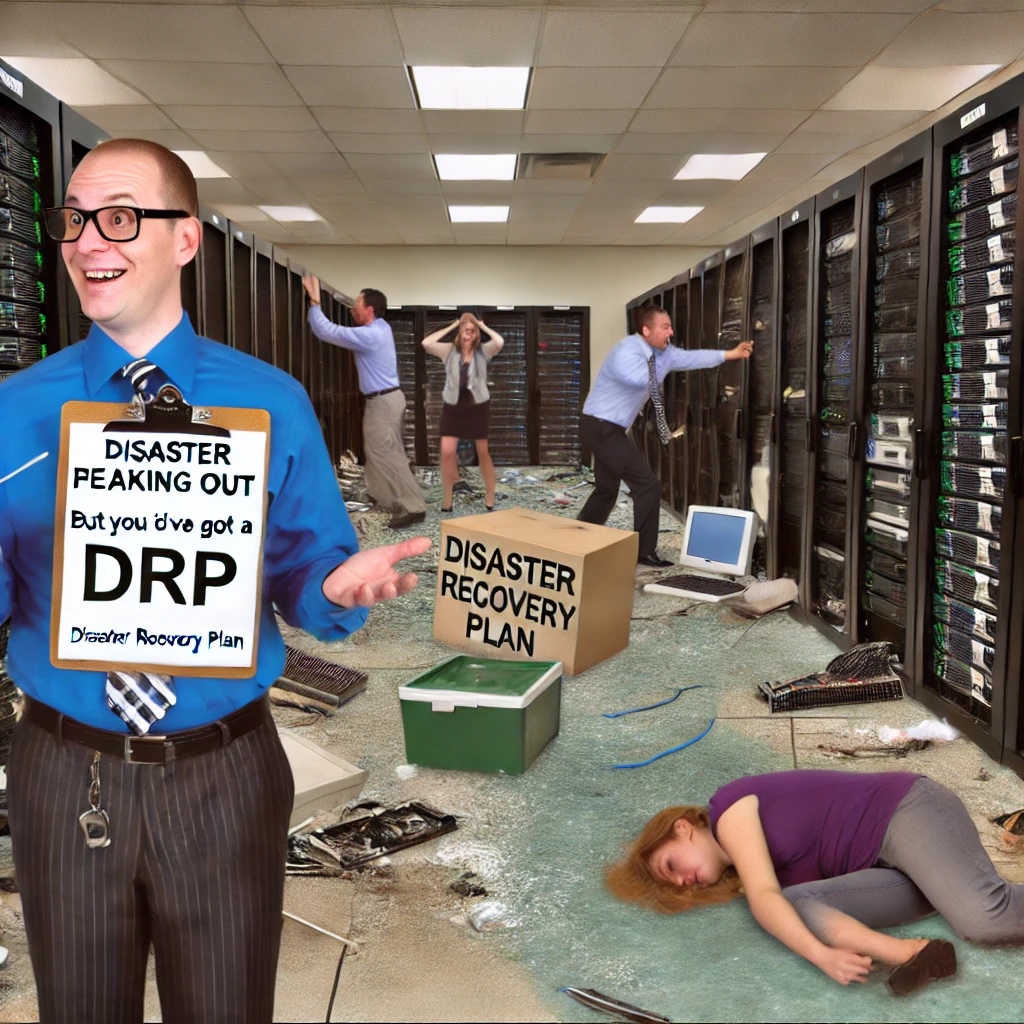In today’s technological landscape, where businesses increasingly rely on digital systems to operate, protection against unexpected events is crucial. A Disaster Recovery Plan (DRP) is a set of policies, tools, and procedures designed to restore systems, data, and operations in the event of a major disruption, such as natural disasters, hardware failures, cyberattacks, or human error.
The goal of a DRP is to minimize the impact of a disaster on the business and ensure that recovery is swift and efficient, guaranteeing the continuity of operations. Without an adequate recovery plan, businesses risk significant financial losses, damage to their reputation, or even a complete shutdown of operations.
Importance of Having a Disaster Recovery Plan
Implementing a DRP is not just a best practice but a necessity for companies that rely on technology for their daily operations. Here are some key reasons why having a DRP is important:
1. Minimization of Downtime
Downtime can be catastrophic for businesses, especially if there is no clear recovery strategy in place. A well-designed DRP enables the swift restoration of critical systems and reduces the impact on productivity.
2. Data Protection
Data is one of a company’s most valuable assets. In the event of a disaster, such as hardware failure or a cyberattack, a DRP ensures data recovery or, at the very least, minimizes data loss.
3. Reduction of Financial Losses
Every minute of downtime or data loss can translate into significant financial losses. With a DRP, businesses can plan for recovery costs in advance and minimize the financial impact of an unexpected event.
4. Regulatory Compliance
Many industries, such as finance and healthcare, have strict regulations that require the implementation of a DRP. Complying with these regulations not only avoids legal penalties but also demonstrates a commitment to security and business continuity.
5. Reputation Protection
A company that can quickly recover from a disaster shows its customers and business partners that it is reliable and prepared for adverse situations. An effective DRP helps protect the company’s reputation in critical moments.
Phases of a Disaster Recovery Plan
A DRP must be structured and tested regularly to ensure its effectiveness. The key phases of a DRP include:
1. Risk Assessment: Identify the potential risks that could affect business continuity, from natural disasters to cyber threats.
2. Identification of Critical Resources: Determine which systems and data are essential for business operations and must be prioritized for recovery.
3. Backup Creation: Establish a data backup strategy that allows for information recovery in the event of loss.
4. Development of the Recovery Plan: Design procedures and assign responsibilities to restore critical systems in case of a disaster.
5. Testing and Updates: A DRP should be tested periodically to ensure it works properly and updated regularly to reflect changes in systems and business operations.
Useful Tools for Implementing a Disaster Recovery Plan
There are several tools available that can facilitate the implementation and management of a DRP. Below are some of the most recommended ones:
1. Veeam Backup & Replication
Veeam is one of the most widely used solutions for managing data backups and recovery. It offers support for virtualized, physical, and cloud environments, allowing automated backups and fast restorations in the event of a disaster.
2. Azure Site Recovery
This Microsoft Azure service allows replication of virtual machines and critical data to another data center or cloud, ensuring continuity of operations during any disruption. Azure Site Recovery is particularly useful for businesses using hybrid environments, combining on-premise and cloud infrastructure.
3. Amazon Web Services (AWS) Disaster Recovery
AWS offers multiple services that facilitate the creation of a DRP in the cloud, such as AWS Backup, Amazon S3 for secure storage, and AWS Elastic Disaster Recovery, which allows the rapid replication and recovery of servers and critical data within Amazon’s infrastructure.
4. Zerto
Zerto is a solution specialized in data protection and recovery. It facilitates the replication of virtualized environments and allows for recovery testing without interrupting operations. Its focus on simplicity and automation makes it an excellent option for companies looking for a comprehensive DRP solution.
5. Acronis Cyber Backup
Acronis is another popular tool that offers data backup and recovery for physical, virtual, and cloud environments. In addition to traditional backup features, Acronis also includes cybersecurity options, protecting data against ransomware attacks and other types of malware.
6. SolarWinds Backup
SolarWinds offers a data protection solution focused on critical data, with options for local and cloud backups. It is especially useful for small and medium-sized businesses seeking an affordable option to protect their digital assets.
7. Carbonite
Carbonite is a cloud-focused data recovery solution that simplifies automatic backups and data recovery from multiple devices. It is ideal for businesses that need a simple and effective solution for data protection.
Conclusion
A Disaster Recovery Plan is essential for protecting a company’s digital assets and ensuring the continuity of operations in the face of unexpected events. By implementing a DRP, organizations can reduce downtime, minimize data loss, and ensure they are prepared for any eventuality.
Having specialized tools, like those mentioned above, greatly facilitates the creation and management of a DRP, allowing businesses to focus on what they do best while ensuring the protection and recovery of their systems.

Comments are closed